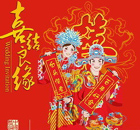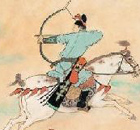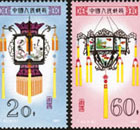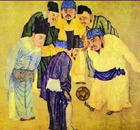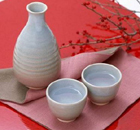Delicacies
Chuan cuisine
(chinahighlights.com)
Updated: 2011-01-05 15:15
 |
Large Medium Small |
Chuan Cuisine is the most popular cuisine in all of China, defined in terms of the breadth and depth of where it is served. Of course it helps the depth parameter that the neighboring population-dense municipality of Chongqing, formerly a part of Sichuan Province, is one of the areas outside present-day Sichuan Province most enamored of Chuan Cuisine.
 |
The dishes of Chuan Cuisine are famous for their spicy-hot flavors, a spicy-hotness that Sichuaners call "dry hot", insisting that it differs from the "wet hot" spiciness of other cuisines. The difference, say, Sichuaners, is that the spices used to achieve "dry hot" spiciness consists of a mixture of dry ingredients such as crushed peppercorns (black, red and white) and dried, crushed chili, as well as Sichuan Province's own native pepper, huajiao ("flower pepper" from the prickly ash tree, Zanthoxylum bungeanum) that is of course first dried, then crushed. According to Sichuan-Cuisine chefs, gourmets and gourmands (which covers just about everyone cooking and eating Sichuan Cuisine : ) ), the salient features of "dry hot" spiciness consist of an instantaneous numbing effect on the tongue, and a pleasing, lingering, spicy-hot aftertaste.
|
 |
Chuan Cuisine is also famous for its bold tastes in general, which all seem to come together in one of the most famous dishes of Sichuan Province and the municipality of Chongqing: Hot Pot. Some of the most common ingredients that contribute to the bold tastes of Chuan Cuisine are: bell peppers, garlic, hot-pickled cucumbers spiked with mustard from Fuling, fermented soybeans from Tongchuan, green beans, peanuts, scallions, broad-bean sauce from Pixian, Chongqing chili sauce, soy sauce from Zhongba, two special vinegars (cooking vinegar from Baoning and salad vinegar from Sanhui) and Sichuan's own special sea salt from wells in Zigong.
And this is only the beginning, as any Sichuaner will tell you, for Sichuan Province, thanks to its remarkable climate, is blessed with a record number of naturally occurring plants used in the preparation of food (and of so-called Medicinal Foods), including some of the best and tastiest varieties of mushrooms in all of China (as regards mushrooms, the province of Sichuan is to China as the department of Dordogne – famous for, among other mushrooms, its truffles – is to France).
|
 |
Chuan Cuisine excels in quick-frying and stir-frying methods, as well as two special cooking methods particular to Chuan Cuisine: dry-braising and dry-stewing. Dry-braising, as the name suggests, involves driving out liquids from the diced meat and vegetable mixture using a hot, thick iron pot with a bare minimum of oil in order to prevent sticking. Once the liquids are driven out and cooked off/ sufficiently reduced, the spices and any additional oil are then added. This results in tender, juicy morsels of meat and crispy vegetables.
Dry-stewing is a method for making sauces derived from soups and broths (drying these out, as it were), to which other, thicker, prepared sauces are added. The soup or broth is reduced slowly over low heat to the desired consistency, then a thick, flavored sauce such as Pixian broad-bean sauce or Chongqing chili sauce is added. Since the soup or broth is often made with the use of fat-marbled meat (or bones with fat-marbled meat) for flavor, the reduction process results in a slightly oilier sauce than comparable sauces made with milk or corn starch, which is partly what gives this sauce its delicious taste.
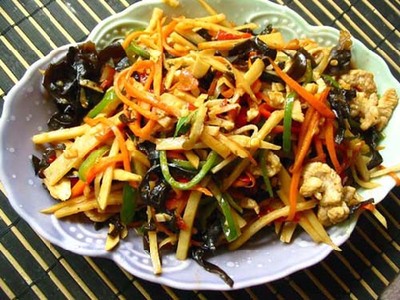 |
There is a saying about Sichuan Cuisine that Chuan Cuisine chefs all over China, especially the chefs of Chengdu and Chongqing, take great pride in: only Chuan Cuisine can produce 'one hundred dishes, each with one flavor, and one dish with all one hundred flavors'.
Below is a representative selection of Sichuan dishes. Note that freshwater fish and crustacea are popular in the province, and, something that might seem odd to a Western palate – fish flavors and sauces are used in conjunction with meat dishes involving pork and beef, etc.
